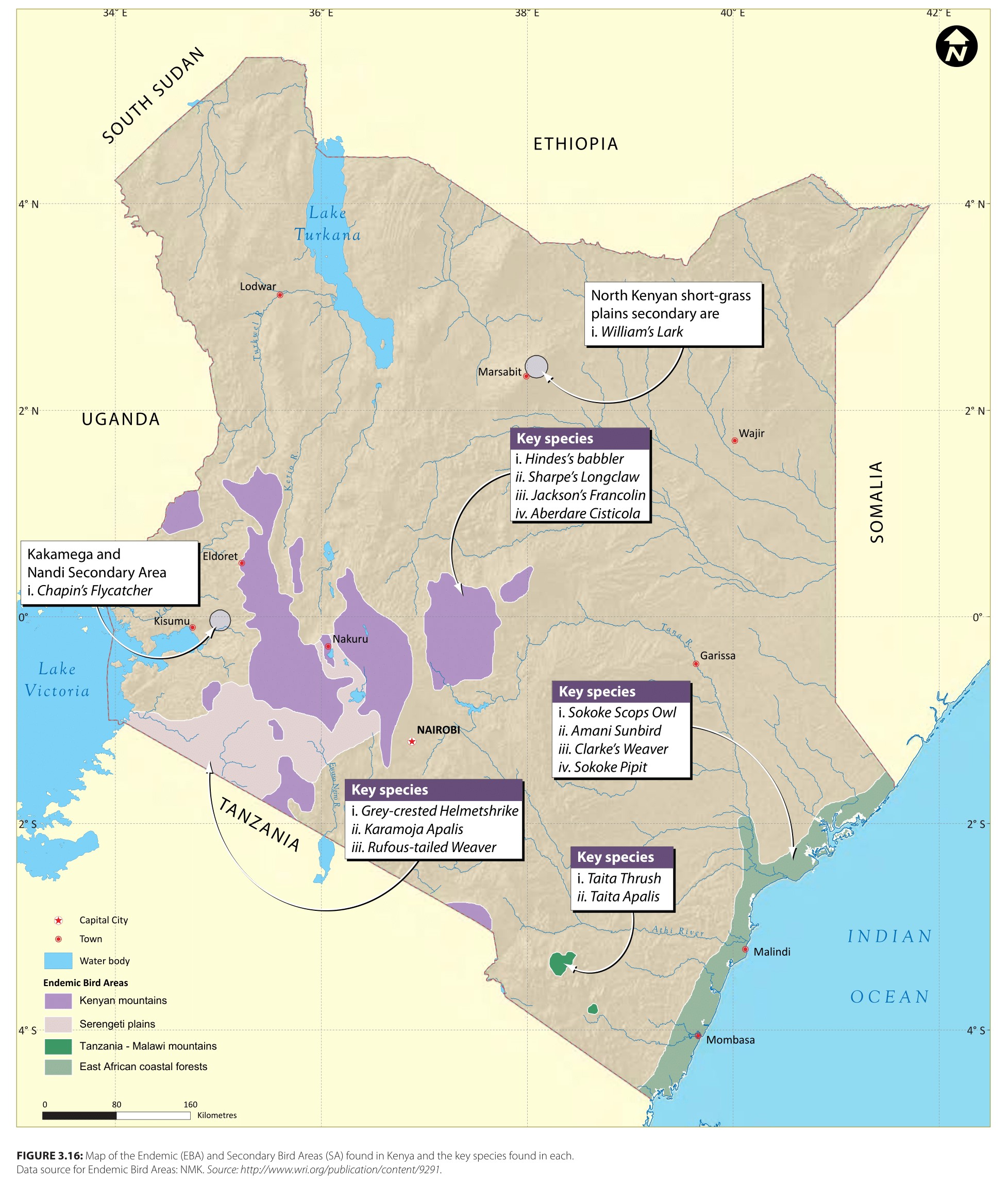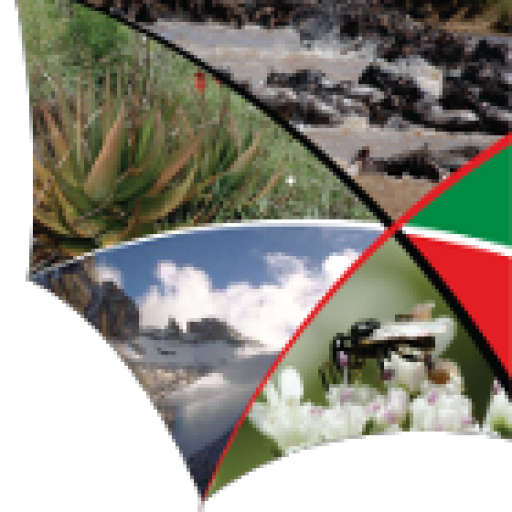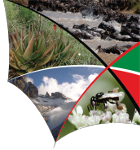Birds
Kenya has one of the richest avifauna diversities in Africa, with around 1,100 bird species recorded. Of these, 800 species are year-round residents, 60 species are afro-tropical migrants moving within the continent and 170 are Palaearctic migrants that journey from Eurasia each winter. The major migratory flyways in Kenya include the 550km long coastline with its associated creeks, reefs and beaches, and the chain of lakes stretching along the Rift Valley from Turkana in the north to Magadi in the south. Some 170 palaearctic migrant bird species migrate south to Kenya from Eurasia for the northern hemisphere’s winter. Eleven of these species have local breeding populations that are year-round residents. Around 60 species in Kenya migrate only within Africa, including Madagascar.
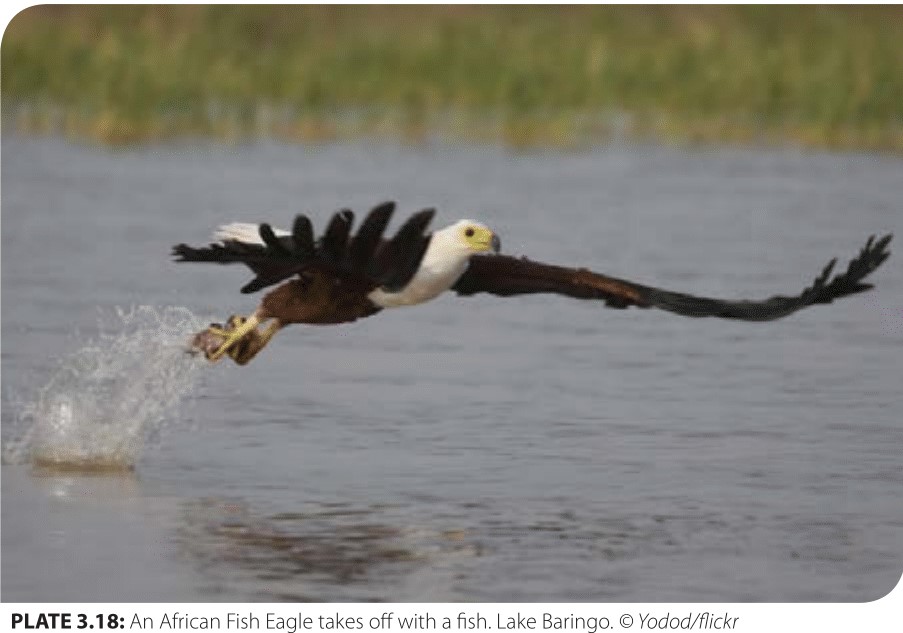
Bird distribution by habitats
Avian Biomes in Kenya
There are six avian biomes in Kenya (Fishpool and Evans 2001), all with characteristic bird species. The Somali Masai biome is the most widespread and has the most representative species (Bennun and Njoroge 1999). The Guinea-Congo Forest biome, though only represented in Kenya by the Kakamega Forest is represented by 43 species in Kenya. The Sudan and Guinea savannah is marginal in Kenya, being at its extreme eastern limit. Most species in this biome are not found elsewhere in the country apart, from Kongelai Escarpment and its environs.
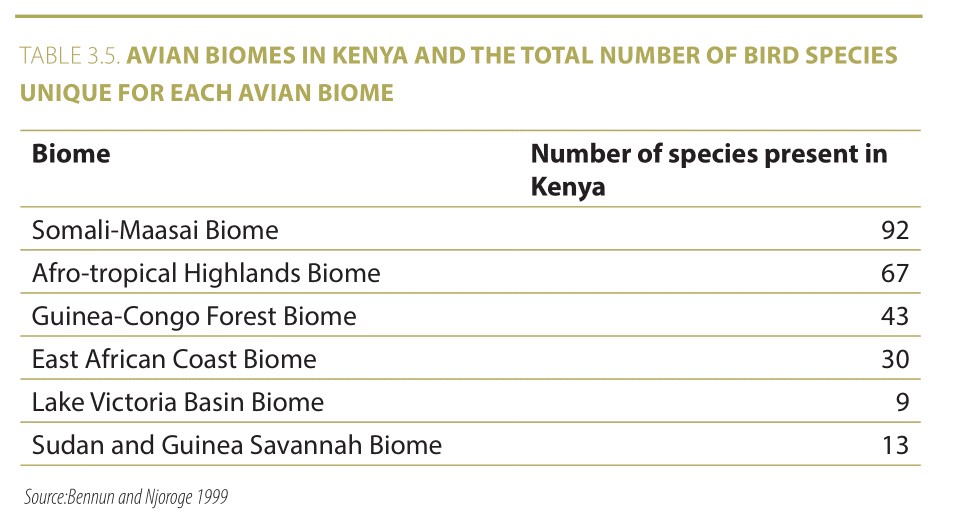
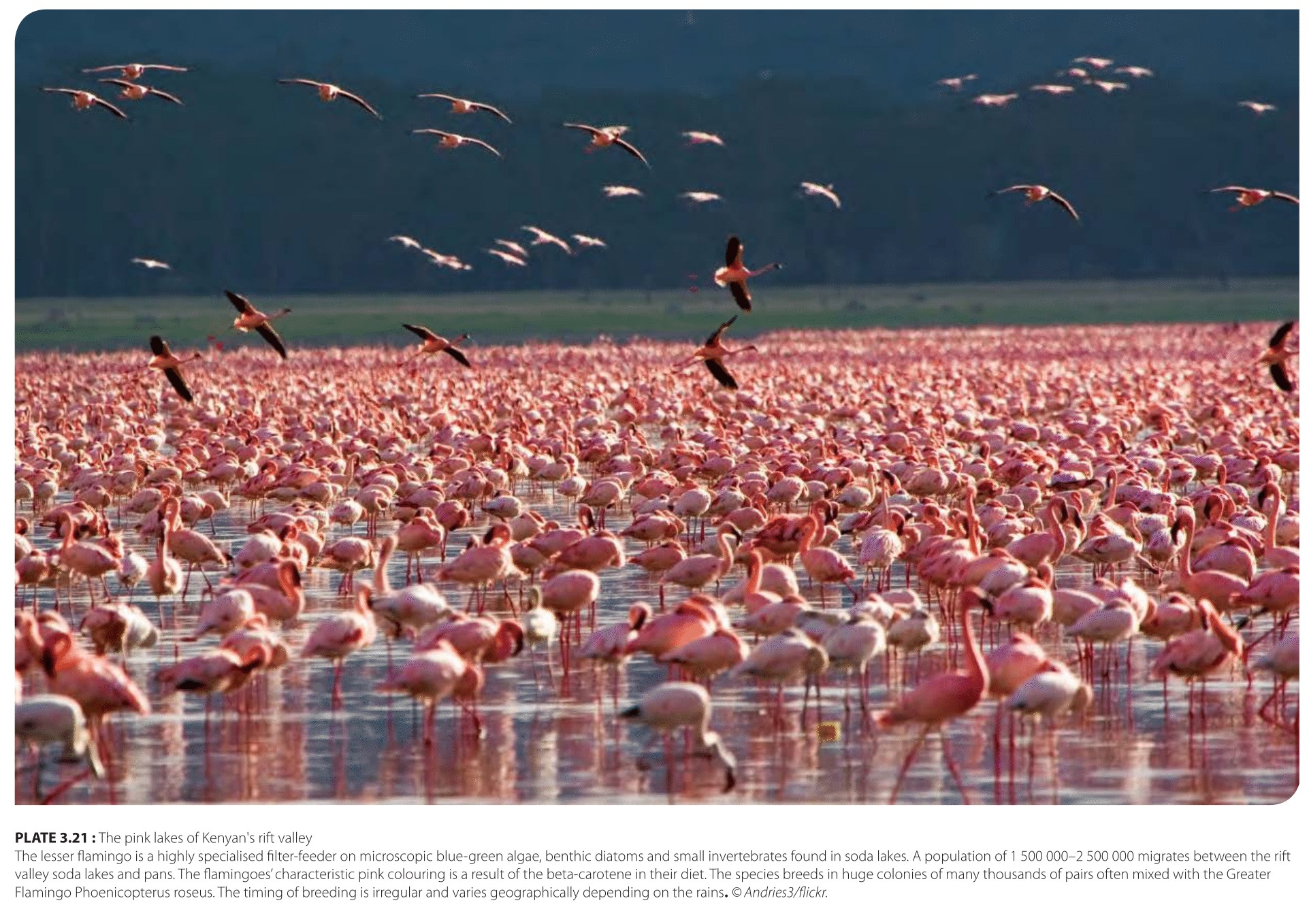
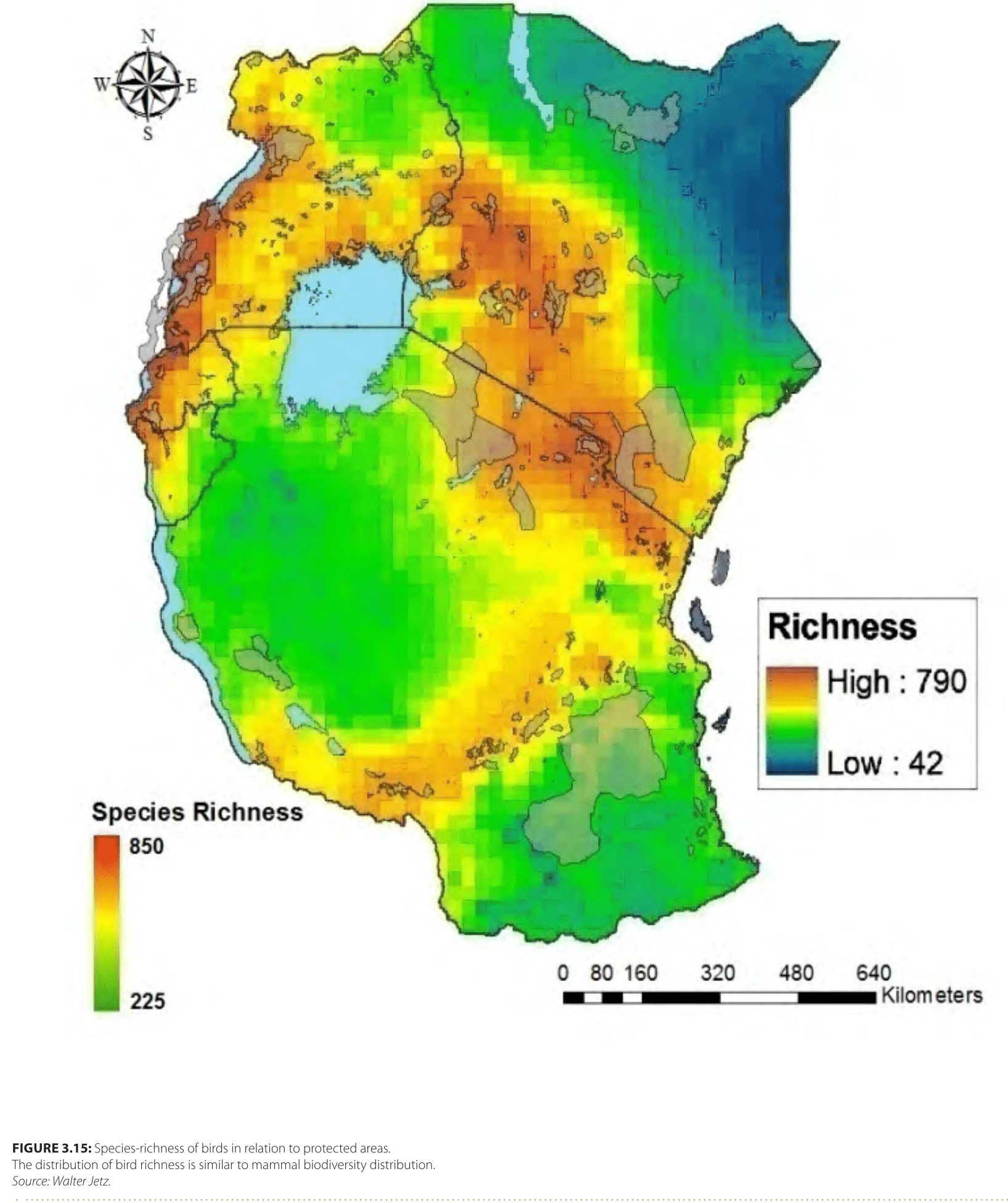
The endemic birds of Kenya
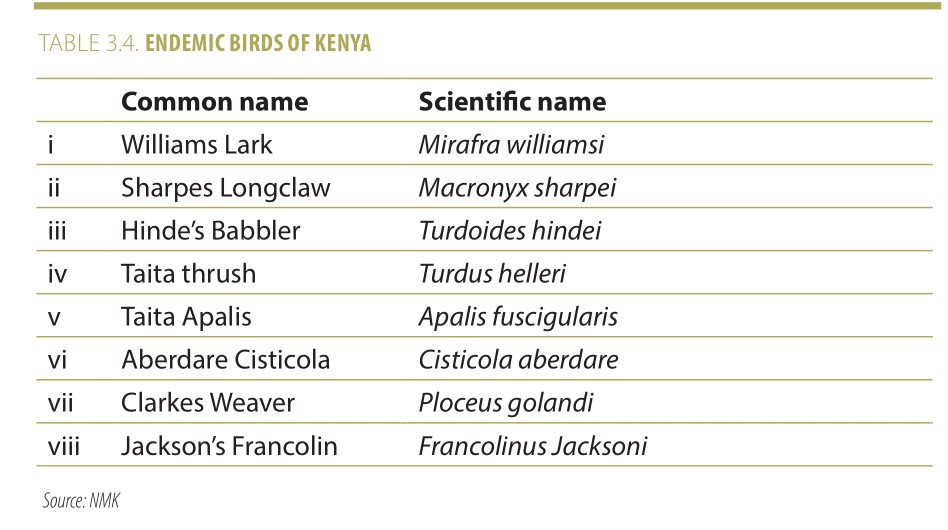
Four globally recognized Endemic Bird Areas (EBAs) are represented in Kenya. One other EBA, the Jubba and Shabeelle valleys, is only marginally represented in Northern-eastern Kenya. EBAs are defined as places where two or more bird species with a world distribution of less than 50,000 km2 occur together. Kenya has two globally recognized secondary areas of importance Kakamega and Nandi forests, and the northern Kenya short-grass plains.
